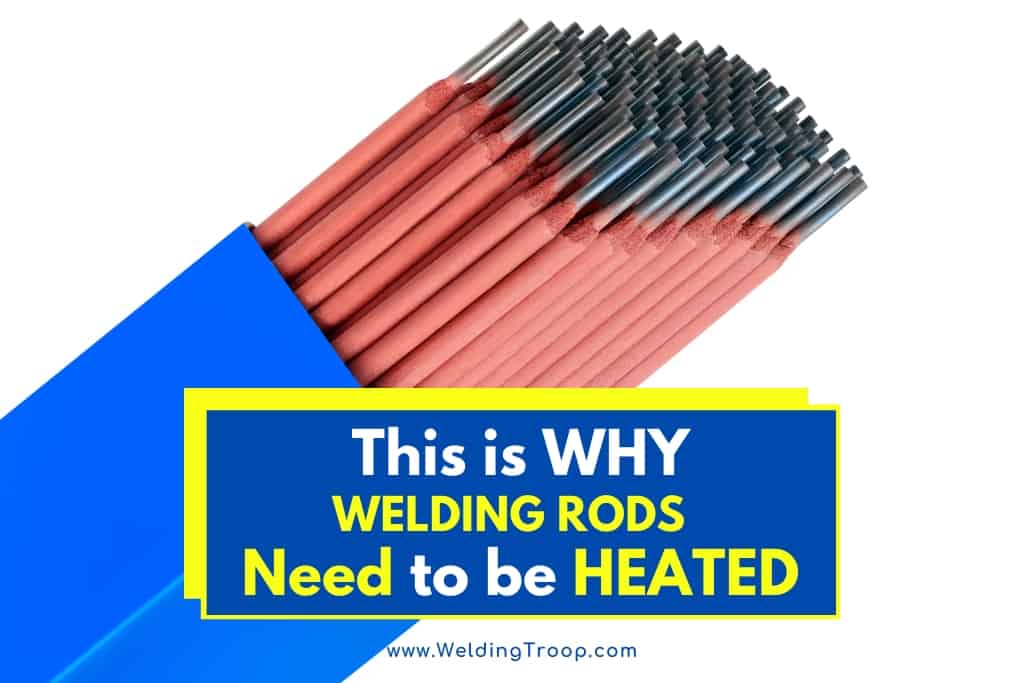Welding is an incredible talent that can allow a person to work with everything from small projects in their garage to repairing battleships. Welding has been evolving as our technology does, but welding with rods is still the most common, and for some, preferred method of welding.
Do welding rods need to be heated? Yes, welding rods do need to be heated to keep them functioning at their best. Depending on the rods you are using to weld, they will have different standards for their use and storage.
Table of Contents
How do Welding Rods Work?
Using welding rods is more commonly known as stick welding. The technical name is Shielded Metal Arc Welding (SMAW). The simplicity and versatility of stick welding is what makes it the most popular method of welding.
The process uses either an alternating or direct (AC or DC) electrical current created by the generator. The current passes into the welding rod, which is called an electrode.
The electrode is a solid metal rod that is coated with metal powders and a binding agent called flux. The current flowing through the welding rod interacts with the metal meant to be welded, causing a dramatic increase in temperature. The rod then melts the metal and itself to form a bond, usually called the bead.
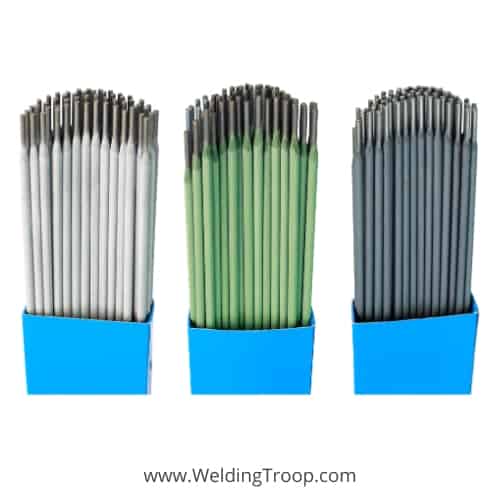
This is, of course, a very simplified explanation. The practice of welding has a lot more details and requires a practiced technique to do cleanly and safely. One of those details is how to care for your welding rods before use.
Why Rods Need Heating?
If the electrical current creates the heat needed to melt the metal, why do the rods need to be heated? The short answer is that the heating isn’t to help melt the metal. The heating of welding rods is to keep moisture out of them.
Welding uses electricity, and as we all know, electricity and water do not go well together. It stands to reason that increased moisture in an electrical system can contribute to undesirable results.
Because welding rods have a powdered coating, they are inherently dry and porous. This makes them a magnet for moisture. Furthermore, flux generally does not like moisture, which is why parts are cleaned before being welded together. If you are cleaning and drying your materials that are going to be welded, it only makes sense that the materials you use to weld be dry as well.
Moisture in your weld can create porosity (small holes) or cracks in your welds. It will also cause your beads to lose their uniformity and clean look. This happens because the moisture turns to steam and can create a pocket of hot air and water that will push away flux and melting metal.
If your welds are not solid and uniform, you will have weak points in them. Weak welds could cause a catastrophic failure in your project. Welds with obvious defects like this will also fail inspections in some fields, requiring the work to be redone.
If you would like more information on how wet and dry welding rods perform, here is a video that puts them side by side.
Electrodes: Storage Box, Holding Oven, and Reconditioning Temperatures
Different types of steels require different welding rods. Likewise, different steel thickness can require different welding rods. Each requires very specific voltages to operate, lending to our earlier statement about the complexities of welding.
To simplify things a bit, let’s operate under the idea that you already know the rods you will need. The list below will tell you the temperature for your storage boxes, holding ovens, and reconditioning temperatures as well as the baking times.
Keep in mind that when they are reconditioned, welding rods should never be baked for more than 4 hours. Additionally, they should be kept at temp for at least 30 minutes. Welding rods should not be baked more than 3 times before disposing of them.
- E-XX10, E-XX11, E-XX12, E-XX13
- Keep dry and at room temperature
- Do not keep in a holding oven
- Reconditioning is not recommended
- E-XX14, E-XX20, E-XX24, E-XX27
- Storage boxes at 150-200 F
- Holding oven at 150-200 F
- Reconditioning at 250-300 F for 1 hour
- E-60 or 7015, E-60 or 7016, E-7018, E-7028
- Storage boxes at 250-450 F
- Holding oven at 150-200 F
- Reconditioning at 500-600 F for 1 hour
- E-80 or 9015, E-80 or 9016, E-80 or 9018
- Storage boxes at 250-450 F
- Holding oven at 200-250 F
- Reconditioning at 600-700 F for 1 hour
- E-90 12015, E-90 12016, E-90 12018
- Storage boxes at 250-450 F
- Holding oven at 200-250 F
- Reconditioning at 650-750 F for 1 hour
- E -XXX-15, E -XXX-16
- Storage boxes at 250-450 F
- Holding oven at 150-200 F
- Reconditioning at 450 F for 1 hour
- Stainless
- Storage boxes at 250-450 F
- Holding oven at 150-200 F
- Reconditioning at 450 F for 1 hour
Related Article: Different Types of Welding Rods and Their Uses
What Can You Do for Your Welding Rods?
The most important thing to do for your welding rods is to keep them in safe storage. What does safe storage mean? Well, it is NOT an old freezer or toolbox, as some people tend to suggest.
First and foremost, it has to be airtight. You do not want moisture to be able to get into where you store your welding rods.
If you are transporting your welding rods from site to site or know you’ll be working around a lot of moisture, you will want to consider an electrode storage canister to keep them dry and retain warmth.
Because welding rods will soak up the moisture from the air during transportation or storage, you will need to get them dry. A lot of old school welders may tell you to turn on the oven and toss them in. Do NOT follow this advice.
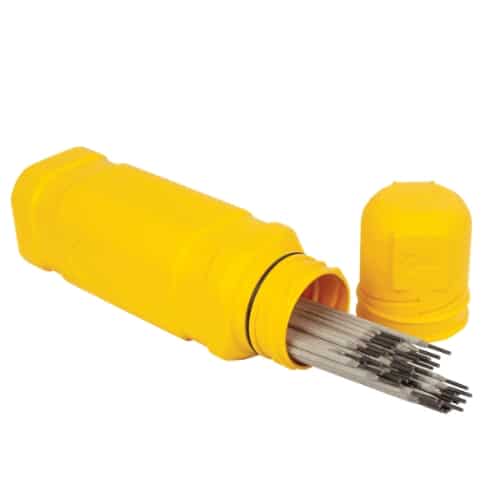
Ovens do not hold a completely stable temperature. Overheating your welding rods could severely damage them. Also, the temperatures and bake times that some welding rods need to reach before use is very high, and your oven is unlikely to reach these temperatures safely.
Instead, welders use what is called a welding rod oven, and it is just how it sounds. It is an oven designed specifically for welding rods that can safely reach and sustain the temperatures needed. These come in portable models, as well as larger ovens designed for your shop.
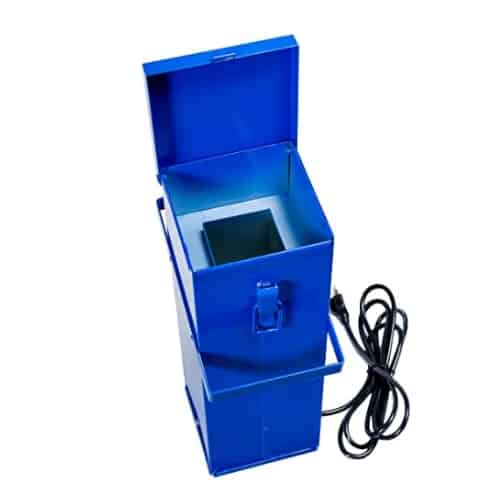
The portable model is great for the welder on the go. It is small and light enough that it can be carried around a job site or be used by welders that do mobile repairs. All you need is access to an electrical outlet, and you’re ready to go.
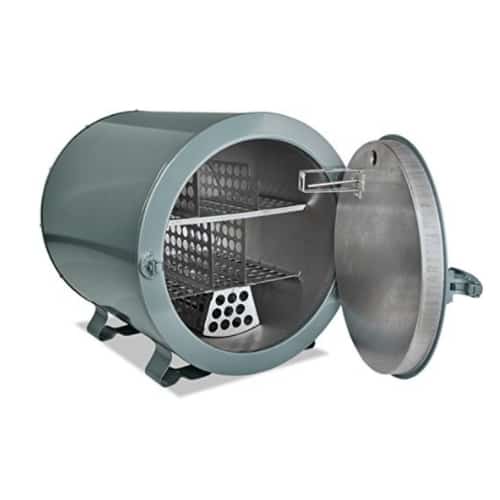
The larger ovens are not portable. For those with a fabrication or metalworking shop, these ovens are the way to go.
Some models will allow you to store hundreds of rods, allowing for large scale projects without needing to stop to refill the oven. Keep in mind that some of the larger ovens will require a 220-volt outlet to power them.
Conclusion
Welding can be an incredibly useful and potentially lucrative skill, but it certainly requires a lot of knowledge, practice, and care to do well. Mistreating your welding rods can undo all of the hard work you have put into your work, and this is why welding rods need to be heated. Proper materials and practices will go a long way towards rewarding welds.
Recommended Reading
Do Welding Electrodes Have a Shelf Life?| Electrodes Expiry

